
Favorite Books
Native American Art Council
Portland Art Museum
This selection of books is informed by my many years as chair and co-chair of the Reading Circle of the Native American Art Council at the Portland Art Museum. The Reading Circle, a book club that focuses on literature by and about Native Americans, has been in existence since l989. The members meet three times each year for an in-depth discussion of a selected book.
This is a list of books that Reading Circle members voted as their all-time favorites. These fiction and nonfiction books represent a wide range of topics, including culture, history, politics, biography, and natural history. Most are written by Native American authors, a few are written by experts who address significant subject matter.
I have enjoyed reading every one of these books and I am happy to share this list with you. I hope that you will choose to read some of them and that you will find them as enriching and informative as I have.
Books that are available in the Rose Villa Library are noted. The Clackamas County library system has all of these books (except Winona LaDuke’s Recovering the Sacred), most in multiple copies.
Stephanie Feeney
Click to view or print the PDF version of this booklist.
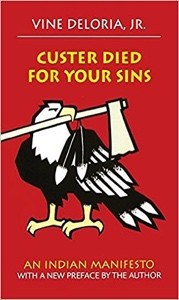
Deloria, Vine Jr., Custer Died for Your Sins, 1969/1988.
Standing Rock Sioux activist, professor, and attorney Vine Deloria, Jr., shares his outspoken thoughts about US race relations, federal bureaucracies, Christian churches, and social scientists in a collection of eleven eye-opening, and often humorous, essays. This “manifesto” provides valuable insights on American Indian history and culture, and a context for understanding the current political situation. Originally published in 1969, and updated in l988, this book remains a classic and is still one of the most significant nonfiction works written by a Native American.

Dobkins, Rebecca, The Art of Ceremony, 2022.
(Available in the Rose Villa Library.)
This book grew out of an exhibit of ceremonial items from the nine federally recognized tribes in Oregon that were featured in a 2008 exhibit at the Hallie Ford museum. Dobkins (curator at the Museum) examined significant cultural items and practices selected by each tribe to be highlighted in the book. What is notable about this project is that tribal representatives (not outside experts) made curatorial choices that reflected the values of their communities. Common elements and themes emerged from exploration of the wide variety of cultural practices that were selected. The Art of Ceremony provides valuable insights into contemporary tribal cultures, how the ceremonies impact the communities that practice them, and the incredible resilience of the Oregon tribes.
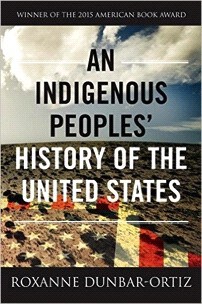
Dunbar-Ortiz, Roxanne, An Indigenous People’s History of the United States, 2014.
Historian and activist Roxanne Dunbar-Ortiz offers a history of the United States told from the perspective of Indigenous peoples. Spanning more than four hundred years, this bottom-up peoples’ history radically reframes US history and challenges the silences about Indigenous people that has been characteristic of our national narrative.
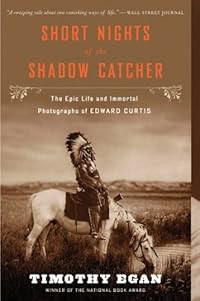
Egan, Timothy, Short Nights of the Shadow Catcher: The Epic Life and Immortal Photographs of Edward Curtis, 2013.
(Available in the Rose Villa Library.)
In the summer of 1900, Edward Curtis gave up a successful photography career to photograph all the Indian communities in North America. He quickly learned that his subjects were dying off fast, so he’d need to hurry if he was, in his words, “to capture the essence of their lives before that essence disappeared.” A mountaineer, explorer, intrepid photojournalist, and amateur anthropologist, Curtis said “I want to make them live forever.” As Egan’s story attests, he succeeded, even though he died penniless and alone.

Erdrich, Louise, The Night Watchman, 2020.
(Available in the Rose Villa Library.)
This novel, set in the 1950s, is based on the life of Erdrich’s grandfather who inspired members of the Turtle Mountain Reservation to resist the termination of their tribe that was taking place as part of the termination movement of the 1940s through 1960s. It was awarded the Pulitzer Prize for literature. Other novels by Erdrich including LaRose, Roundhouse, and The Sentence are also highly recommended.

Grann, David, Killers of the Flower Moon, 2017.
Members of the Osage Nation, an extremely wealthy tribe, after oil was discovered on their land, began to die under mysterious circumstances. As the death toll rose, the still nascent FBI became involved. Slowly an elaborate and horrific conspiracy was revealed. National Book Award finalist.

Harjo, Joy, Crazy Brave: A Memoir, 2013.
In this memoir, grounded in tribal myth and ancestry, music and poetry, Joy Harjo (Muscogee (Creek) Nation) details her journey to becoming a poet. Born in Oklahoma, the end place of the Trail of Tears, Harjo grew up finding shelter in her imagination, a deep spiritual life, and connection with the natural world. She attended an Indian arts boarding school, where she nourished an appreciation for painting, music, and poetry; gave birth while still a teenager; and struggled on her own as a single mother, eventually finding her poetic voice.
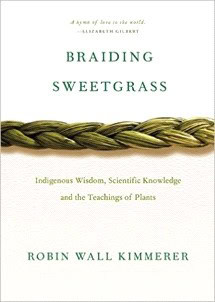
Kimmerer, Robin Wall, Braiding Sweetgrass, 2013.
(Available in the Rose Villa Library.)
Robin Wall Kimmerer, a member of the Citizen Potawatomi Nation, embraces indigenous teachings that consider plants and animals to be our oldest teachers. Drawing on her life as an indigenous scientist (botanist), a mother, and a woman, Kimmerer shows how other living beings offer us gifts and lessons, even when we’ve forgotten how to hear their voices.
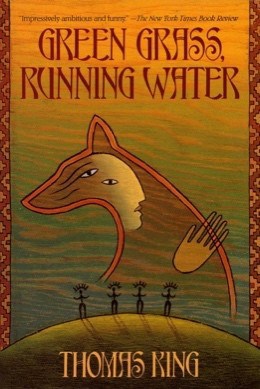
King, Thomas, Green Grass, Running Water, l994.
The plot revolves around the escape from a mental hospital of four very old Indians, who are no ordinary Natives. They may be the last survivors of the Indians interned at Fort Marion in Florida in the 19th century. Or perhaps they are the first human beings, as described in tribal creation myths. Their repeated breakouts from the hospital have coincided with political and natural disasters. King, who is Cherokee, Greek and German, mixes satire, myth and magic into a complex story line that moves from Canada to Wounded Knee to Hollywood, and to a place beyond time where God and Coyote, the native trickster, converse.
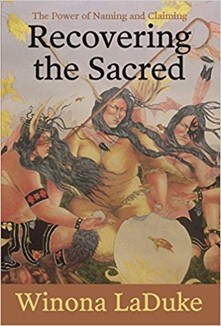
LaDuke, Winona, Recovering the Sacred: The Power of Naming and Claiming, 2005.
Using a wealth of Native American research and hundreds of interviews with Indigenous scholars and activists, Ojibway author and activist LaDuke examines the connection between sacred objects and the lives of her people—past, present and future. She examines conditions under which traditional beliefs can best be practiced. LaDuke uses these essays not just to indict the current situation, but to point out a way forward for Native Americans and their allies.

Orange, Tommy, There There, 2018.
(Available in the Rose Villa Library.)
This novel follows twelve characters from Native communities: all traveling to the Big Oakland Powwow, and all struggling with what it means to be Native American. An ambitious meditation on identity and its broken alternatives. (Also recommended is Orange’s recent book Wandering Stars).

Silko, Leslie Marmon, Ceremony, 1977/2006.
(Available in the Rose Villa Library.)
Tayo, a World War II veteran of mixed ancestry, returns to the Laguna Pueblo Reservation deeply scarred by his experience as a prisoner of the Japanese, and is further wounded by the rejection he encounters from his people. Only by immersing himself in the Indian past can he begin to regain the peace that was taken from him. Ceremony is a profound and moving work of Native American literature, a novel that is itself a ceremony of healing.

Wilkinson, Charles, The People Are Dancing Again: The History of the Siletz Tribe of Western Oregon, 2010.
The Confederated Tribes of Siletz Indians were brought together on the Oregon Coast through treaties with the federal government in 1853–55. The history of the Siletz Tribe, like the history of all Indian tribes in America, is a story of heartache, perseverance, survival, and revival. The Siletz people lost their tribal status but refused to give in. In 1977, after years of work and appeals to Congress, they became the second tribe in the nation to have its federal status, its treaty rights, and its sovereignty restored. The restoration of sovereignty led to recovery of some land and a profound cultural revival. This history, beautifully written by one of the nation’s most respected experts in tribal law and history, is rich in Indian voices and grounded in extensive research.
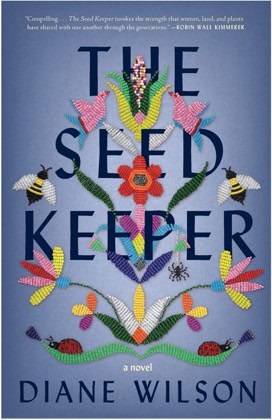
Wilson, Diane, The Seedkeeper, 2021.
A haunting novel spanning several generations, The Seed Keeper follows a Dakota family’s struggle to preserve their way of life, and the sacrifices they made to protect what mattered most to them. Weaving together the voices of four indelible women, The Seed Keeper is a beautifully told story of reawakening, of remembering our original relationship to the seeds and, through them, to our ancestors.
